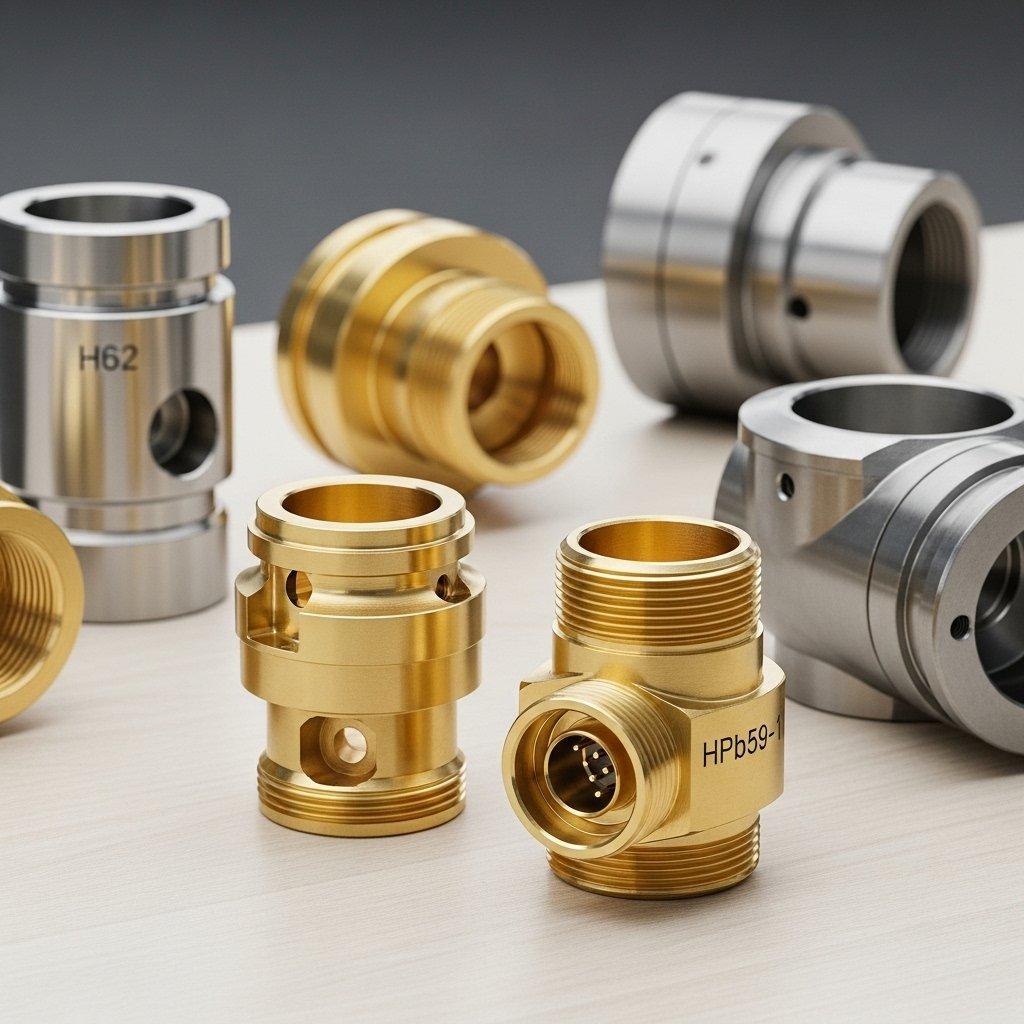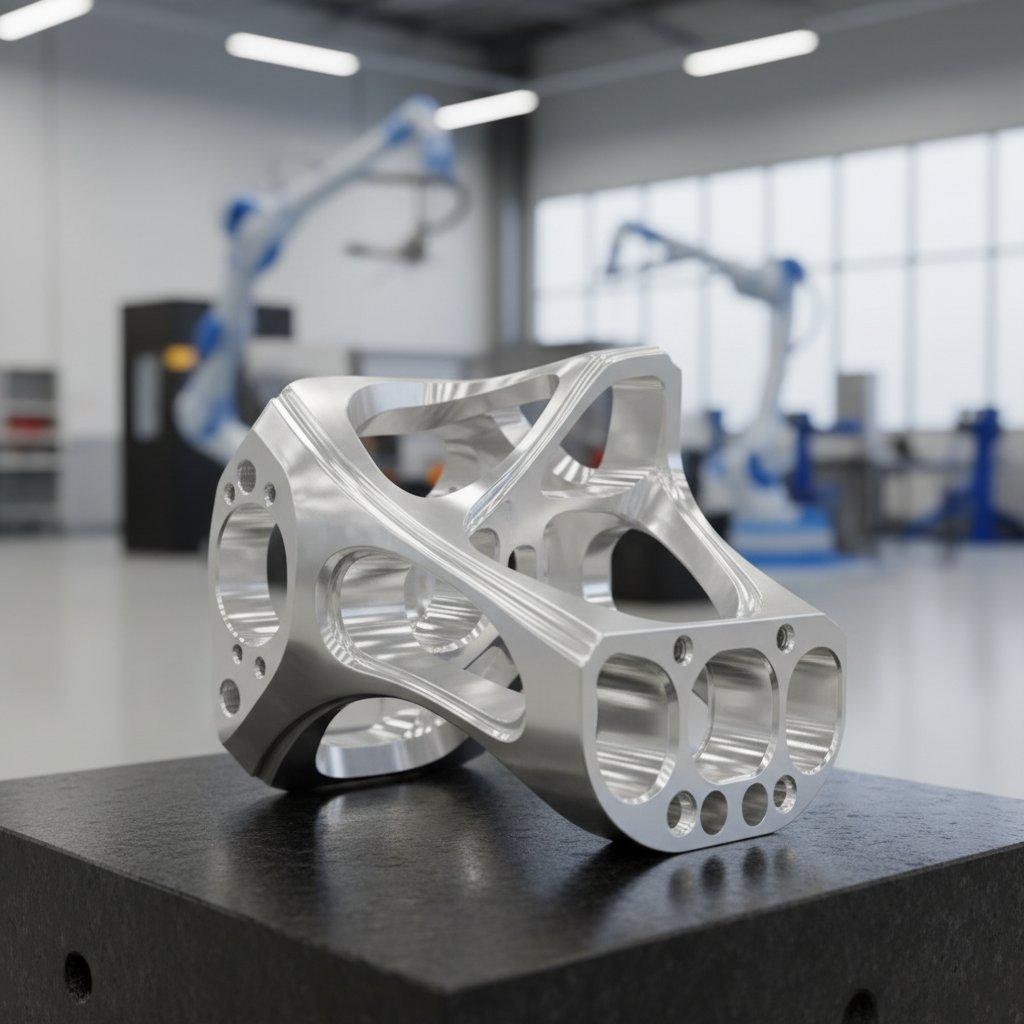Choosing the wrong brass alloy can cost you time, money, and product reputation. Are you confident you’re selecting the absolute best material—H59, H62, or HPb59-1—for your precision components? Discover how our expertise simplifies this critical decision, ensuring optimal performance and cost-efficiency.
This guide delves into the distinct brass characteristics and brass applications of H62 and HPb59-1 brass, empowering you to make informed brass grade selection.

Quick Comparison Table: H62 Brass vs HPb59-1 Brass
| Feature | H62 Brass (Typical) | HPb59-1 Brass (Typical) |
|---|---|---|
| Core Characteristic | Good strength, ductility, corrosion resistance. Generally non-leaded. | Excellent machinability due to lead content. Good strength. |
| Main Advantage | Versatility, good formability for cold working. | High-speed machining, excellent chip control and surface finish. |
| Ideal for | Cold forming, bending, general engineering. | High-volume precision machining, intricate parts. |
| Key Differentiating Element | Higher ductility for deformation processes. | Lead (Pb) content for free-machining properties. |
What is H62 Brass?
Definition and Composition
H62 brass, often referred to by standards like CW617N or CuZn38Pb1, is a common alpha-beta brass alloy. It primarily consists of copper (Cu) at around 60-62% and zinc (Zn) as the main alloying element.
It is typically considered a standard brass grade with a good balance of overall properties. H59 brass is a very similar grade, often used interchangeably, signifying a slightly higher zinc content and similar brass characteristics.
Core Characteristics
H62 brass exhibits a good balance of strength, ductility, and hardness. Its favorable elongation properties make it particularly suitable for cold working processes such as stamping, bending, and deep drawing.
While not classified as free-machining, it can be efficiently machined with appropriate tooling and optimized parameters. Its corrosion resistance is generally good, making it viable for atmospheric and certain marine environments.
Typical Use Cases
Common brass applications for H62 include general engineering components, decorative hardware, electrical connectors, and heat exchanger parts. Its formability also makes it suitable for musical instruments and architectural fittings.
For precision machining, selecting H62 often means prioritizing strength, ductility, and corrosion resistance for parts that require post-machining forming operations.

What is HPb59-1 Brass?
Definition and Composition
HPb59-1 brass is a leaded brass alloy, distinguished by its nominal composition of 59% copper, approximately 1% lead, and the remainder zinc. The “Pb” in its designation explicitly indicates the presence of lead.
This lead content is intentionally added to significantly enhance machinability. Lead does not dissolve in the brass matrix but rather forms small, dispersed particles that act as internal chip breakers.
Core Characteristics
The defining characteristic of HPb59-1 brass is its superior machinability. The lead particles reduce friction during cutting and facilitate the formation of short, brittle chips.
This enables faster cutting speeds, extends tool life, and consistently yields excellent surface finishes. HPb59-1 produces chips that are easily cleared from the cutting zone, a significant advantage in high-speed, automated manufacturing.
While machinability is its forte, HPb59-1 still retains good mechanical strength, albeit with reduced ductility compared to non-leaded brasses.
Typical Use Cases
Due to its exceptional machinability, HPb59-1 brass is ideally suited for complex, high-volume precision parts. This includes fittings for plumbing and gas, intricate electrical connectors, precise gears, and small watch components.
It is a primary choice for manufacturing fasteners like screws and bolts where thread quality and production efficiency are paramount. This grade is often specified when brass grade selection highly prioritizes fast, precise manufacturing for brass applications.

H62 Brass vs HPb59-1 Brass: Detailed Head-to-Head Comparison
Typical Chemical Composition Ranges
| Element (wt.%) | H62 Brass (Approx.) | HPb59-1 Brass (Approx.) |
|---|---|---|
| Copper (Cu) | 60.5 – 63.5 | 57.0 – 60.0 |
| Lead (Pb) | Max 0.05 | 0.8 – 1.9 |
| Zinc (Zn) | Remainder | Remainder |
| Iron (Fe) | Max 0.15 | Max 0.5 |
| Other Total | Max 0.1 | Max 0.3 |
Machinability and Tool Life
In our experience, the difference in machinability between H62 brass and HPb59-1 brass is often the most critical factor for our clients. HPb59-1 is unequivocally superior in this regard.
Its lead content acts as a lubricant and chip breaker, leading to faster machining speeds, reduced tool wear, and excellent surface finishes. H62, lacking lead, produces longer, stringier chips that can wrap around tooling, requiring lower speeds and more frequent tool changes.
This directly impacts production cycle times and overall manufacturing cost for intricate brass components.
Typical Mechanical Property Ranges
| Property | H62 Brass (Annealed, Approx.) | HPb59-1 Brass (Extruded, Approx.) |
|---|---|---|
| Tensile Strength (MPa) | 290 – 440 | 340 – 480 |
| Yield Strength (MPa) | 120 – 160 | 180 – 240 |
| Elongation (%) | 30 – 55 | 10 – 25 |
| Hardness (HV) | 80 – 120 | 100 – 140 |
| Machinability Rating (%) | 30 – 40 (Relative to C36000) | 80 – 90 (Relative to C36000) |
Mechanical Properties and Formability
H62 brass generally exhibits higher ductility and better cold-forming capabilities than HPb59-1. This is because lead can embrittle the material, making it less suitable for significant bending, stamping, or deep drawing operations.
For applications requiring intricate shapes created through deformation, H62 is often the preferred choice among brass characteristics. HPb59-1 retains good strength and hardness, making it suitable for static or moderately stressed components.
The brass grade selection here hinges on whether the manufacturing process involves material deformation or primarily material removal.
Corrosion Resistance and Environmental Considerations
Both H62 and HPb59-1 brass offer good corrosion resistance in many environments, particularly against atmospheric oxidation. However, specific environmental factors, such as exposure to ammonia compounds, can affect all brasses.
A key environmental consideration for HPb59-1 is the presence of lead. While encapsulated, regulations regarding lead content, especially in potable water applications, are becoming stricter (e.g., NSF/ANSI 372 in the US).
For certain medical, food contact, or potable water applications, non-leaded brasses like H62 or specific lead-free alternatives are often mandated, making this a critical brass grade selection criterion.

Pros and Cons Analysis
Advantages and Disadvantages of H62 Brass
Advantages of H62 brass include its excellent balance of strength and ductility, making it highly versatile for various forming operations. It offers good corrosion resistance and is generally more compliant with lead-free regulations for certain brass applications.
Its robust strength makes it suitable for structural components where HPb59-1 might be less optimal due to lead content’s impact on certain mechanical properties.
Disadvantages primarily revolve around its machinability; it is more challenging to machine than HPb59-1, leading to slower production times and increased tool wear for intricate parts. Achieving very fine surface finishes can also be more difficult.
Advantages and Disadvantages of HPb59-1 Brass
The paramount advantage of HPb59-1 brass is its exceptional machinability, allowing for very high production rates, extended tool life, and superior surface finishes in automated environments. This directly translates to lower manufacturing costs per part for complex designs.
Its ability to produce short, brittle chips is a significant operational benefit, preventing entanglement and ensuring smooth operations.
Disadvantages include its reduced ductility, making it less suitable for cold forming or deep drawing. The presence of lead can also be a regulatory concern for specific brass applications, particularly in industries with strict environmental or health standards.

Cost and Pricing Comparison
When comparing H62 and HPb59-1 brass, it is essential to look beyond the raw material price per kilogram. While HPb59-1 might sometimes have a marginally higher initial cost due to its specific alloying elements, the true cost often lies in machining efficiency.
For high-volume projects requiring intricate features, the faster cycle times, reduced tool changes, and lower rejection rates with HPb59-1 brass typically lead to a significantly lower overall component cost.
Conversely, for simpler parts that can be formed or bent, H62 brass might be more economical, as its ductility reduces the need for complex machining. Our transparent pricing models factor in all these variables to provide an accurate estimate, ensuring optimal brass grade selection.
Real-World Use Cases / Customer Testimonials
Use Case 1: Application of H62 Brass
We recently collaborated with a client in the automotive sector who required a durable, corrosion-resistant sensor housing that also needed to be deep-drawn into a complex shape. After careful brass grade selection, H62 brass was chosen for its ideal brass characteristics.
Its superior ductility allowed for the required forming without cracking, ensuring structural integrity and longevity in a demanding environment. In our experience, H62’s balanced properties proved ideal for this blend of formability and environmental resilience.
Use Case 2: Application of HPb59-1 Brass
For a manufacturer of high-precision hydraulic fittings, consistent thread quality and high production volume were paramount. They needed a material that could be machined at very high speeds without excessive tool wear or burring.
Our recommendation for HPb59-1 brass was based on its exceptional free-machining properties. This resulted in a 25% reduction in cycle time and a noticeable improvement in surface finish and thread accuracy, leading to significant cost savings for the client through optimized brass applications.

Decision Framework: Which One Should You Choose?
Choose H62 Brass if you…
…require a material with excellent ductility for cold forming operations like stamping, bending, or deep drawing.
…need good corrosion resistance in a general engineering context without specific lead-free mandates for your brass applications.
…are manufacturing simpler components where machining efficiency is not the absolute highest priority, or where the design naturally favors a more ductile brass.
…are concerned about lead content for specific end-use applications (e.g., potable water, food contact, certain medical devices), where lead-free compliance is a critical brass characteristic.
Choose HPb59-1 Brass if you…
…prioritize maximum machinability for high-volume, complex precision parts.
…aim to achieve the lowest possible production cost per piece due to faster cycle times and extended tool life.
…require superior surface finishes and tight dimensional tolerances from machining operations.
…are producing parts like intricate fasteners, valves, gears, or electrical pins where chip control and manufacturing speed are paramount considerations for brass grade selection.

Conclusion
The choice between H62 brass and HPb59-1 brass is a critical engineering decision, profoundly impacting product performance, manufacturability, and overall cost. H62 offers superior ductility and strength for forming processes, while HPb59-1 provides unmatched machinability for intricate precision components.
Understanding their distinct brass characteristics and optimal brass applications is key to project success. By partnering with an expert source manufacturer like us, you leverage deep technical expertise and transparent processes to navigate this complex brass grade selection.
FAQ Section
What is the primary difference between H59, H62, and HPb59-1 brass?
The primary difference lies in their copper-zinc ratio and the presence of lead. H59 and H62 are non-leaded alpha-beta brasses, with H59 typically having slightly less copper than H62. They are more ductile and suitable for forming. HPb59-1 is a leaded brass, meaning it contains lead (Pb) to significantly enhance its machinability.
How do environmental regulations impact the choice between H62 and HPb59-1 brass?
Environmental regulations, particularly those concerning lead content in potable water systems or certain consumer products, are a significant factor. HPb59-1, containing lead, may be restricted or prohibited in such sensitive brass applications. H62 brass, being non-leaded, offers a more compliant alternative for these uses.

Can HPb59-1 brass be cold formed or bent?
While HPb59-1 brass has good strength, its lead content significantly reduces its ductility, making it generally unsuitable for extensive cold forming, bending, or deep drawing operations. These processes can cause cracking due to the presence of lead particles. For applications requiring significant material deformation, non-leaded brasses like H62 or specific forming brass grades are typically preferred for optimal brass characteristics.



